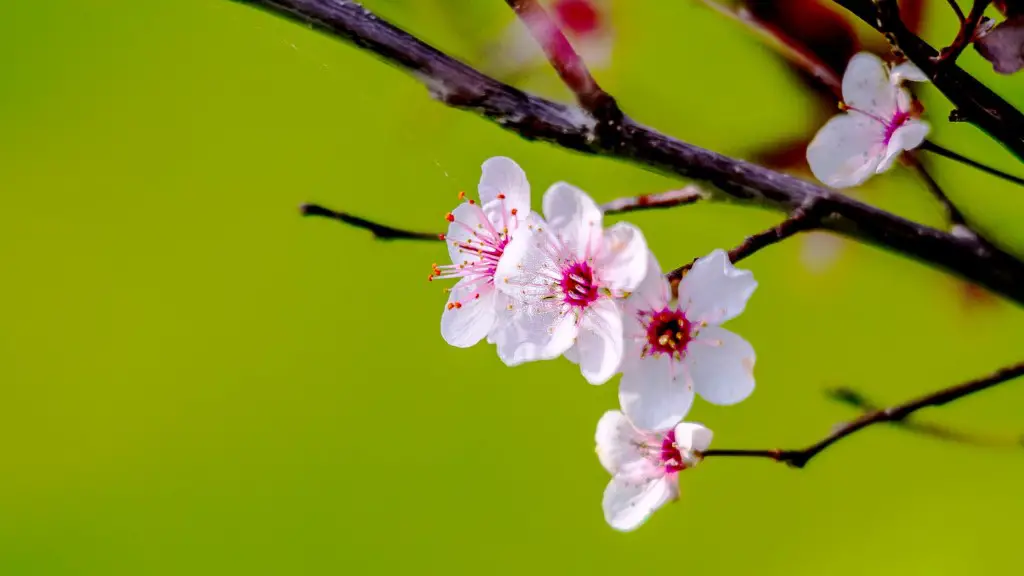Cherry Tree Watering Basics
Cherry trees are a popular addition to many yards because of their colourful ornamentation and delicious fruit. To ensure a healthy harvest, it is important to learn how often to water cherry trees and the basics of proper cherry tree care. Knowing effective methods of water usage when irrigating cherry trees can save time and energy, as well as provide a bountiful harvest with as few problems as possible.
It is important to note that cherry trees need a regular watering schedule in order to accurately assess current watering needs. Without a watering schedule, it can be difficult to determine when a tree needs water and when it has had enough. In general, the amount of water a cherry tree needs will depend on the season – the warmer months will require more water while the cooler months will require less.
An underlying factor of cherry tree watering is the type of soil the tree is planted in. Soils with a high clay content will hold more water, so will require less frequent irrigation. Sandy soils, however, can easily lose water so may need more frequent irrigation. Consider testing your soil before watering to get an accurate idea of the moisture level.
When watering cherry trees, it is recommended to use a drip or slow trickle system. This is because, when the trees are subjected to a sudden flood of water, air pockets can form, resulting in soil compaction and root suffocation. A slow trickle helps ensure the water is evenly spread and absorbed throughout the soil – effectively eliminating any air pockets.
It is also important to note that cherry tree roots need water to grow, so it is important to make sure the soil is moist and not too wet or dry. When just starting a cherry tree watering schedule, it is best to start with a light watering and increase the amount as needed. A good rule of thumb is to water the tree until the soil is moist but not saturated. It is also important to note that over-watering can cause the tree to weaken, as it can no longer get the oxygen it needs.
Cherry Tree Watering Frequency
Generally, cherry trees need to be watered once every week – however, depending on the current weather and soil conditions, this may need to be adjusted slightly. During the hot summer months, the tree may need to be watered more frequently as the sun can cause the soil to dry out faster. However, during the winter months, less frequent watering is generally recommended.
It is important to pay attention to the weather forecast and local conditions when watering cherry trees. When it is dry and hot, with little rain, the trees should be watered more often. If there has been a lot of rain recently, it is best to back off on the watering to give the tree a chance to recover and prevent root rot.
It is also important to note that the type of cherry tree being watered can make a difference in the amount of water it needs. Sweet cherry trees typically need more water than sour or dwarf cherry trees.
Cherry Tree Watering Neglected Trees
Cherry trees that have been neglected or abandoned for some time may not require the same amount of water as healthy trees. If the soil is dry when first assessing the tree, it is best to start with fewer waterings and make small increases to adjust the tree to regular waterings.
It is also important to make sure the tree has enough sun. When a tree does not get enough sun, it can become weak, making it more susceptible to pests or fungal infections. It is also important to note that a lack of sun can also cause dehydration in the plant.
Watering Methods
When watering cherry trees, there are a number of methods that can be used. It is best to start with a steady trickle of water and then increase the amount as needed. Sprinklers, hoses, and soaker hoses can all be used to irrigate cherry trees – however, sprinklers and soaker hoses can be more efficient as they slowly deliver the water, ensuring the roots get enough water without over-watering.
In addition to these methods, a watering can can also be used for smaller cherry trees. When watering with a can it is important to remember to slowly and evenly pour the water onto the base of the tree.
Signs of Over-Watering
It is important to keep an eye on the soil around the cherry tree and check for signs of over-watering. Signs of over-watering can include water-logged soil, sickly yellow leaves, wilting leaves, and an abundance of pests.
Over-watering can cause the roots to become water-logged, resulting in a lack of oxygen. The lack of oxygen can cause the tree to become sick, resulting in yellowing and wilting leaves, as well as an abundance of pests.
Fertilizing A Cherry Tree
Fertilizing cherry trees can help them reach their full potential and ensure good health. When using fertilizer on cherry trees, it is important to note that it should not be used when the tree is in bloom, as the fertilizer can damage the flowers.
The best time to fertilize is in the early spring and late fall. The fertilizer should be applied in the early spring when the buds are about to burst, and again in the late fall after the leaves have fallen. This will give the tree the nutrients it needs to stay strong throughout the cold winter and into the warm summer.
It is also important to note that, when fertilizing cherry trees, it is best to use a slow-release fertilizer that is specially formulated for fruit trees. This type of fertilizer will slowly release the nutrients into the soil, ensuring the tree gets the food it needs for optimal growth and health.
Pruning A Cherry Tree
Pruning cherry trees is an important part of keeping them healthy and productive. When pruning, it is important to remove any weak or dead branches, as these can create an entryway for pests and weaken the overall health of the tree.
It is also important to note that when pruning, it is best to prune in late fall or winter when the tree is dormant. Pruning in the summer or when the tree is in bloom can cause damage to the flowers, leading to fewer fruits.
When pruning, it is best to start by cutting off any weak branches. This can help improve air circulation in the plant, which can encourage strong growth. Pruning also allows for sun and water to reach all the branches, leading to stronger fruits.
Insect and Disease Prevention
Cherry trees can be prone to a variety of different insects and diseases. To help prevent any issues, it is important to keep the tree healthy and make sure the soil is always moist – not too dry or too wet.
It is also important to keep an eye out for pests, as they can cause damage to the plant if left unchecked. Early detection is key to preventing pests from taking hold and causing harm to the tree.
If a tree is showing signs of disease or pests, it is important to act quickly in order to prevent any further issues. The type of treatment used will depend on the issue, so it is best to talk to a local nursery or garden center for more information.
Harvesting Cherries
When cherries are ripe and ready to be harvested, it is best to pick them as soon as possible to ensure they remain fresh and juicy. To pick cherries properly, it is best to use your fingers or a small fruit picker to gently remove the cherry from the tree – it is important to be gentle as the cherries can easily be damaged.
When picking cherries, it is important to only pick the ripe ones and leave the unripe ones on the tree. The unripe cherries will continue to grow, resulting in a larger harvest in the long run.
Cherry Tree Care Tips
Taking proper care of cherry trees can be a rewarding experience that supplies a bounty of sweet cherries. For optimal results, it is important to remember the basics – properly water the tree, fertilize, prune, and watch for pests and disease. By taking the proper steps, a healthy cherry tree can be enjoyed for many years.


